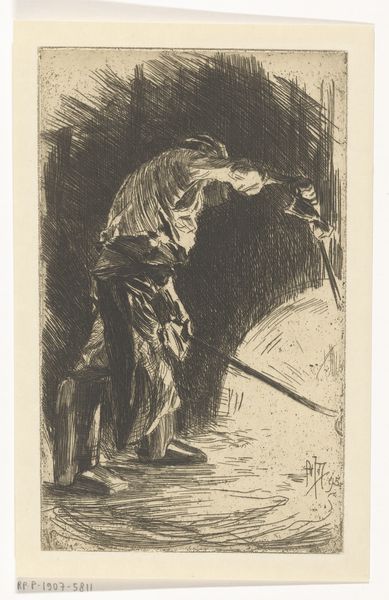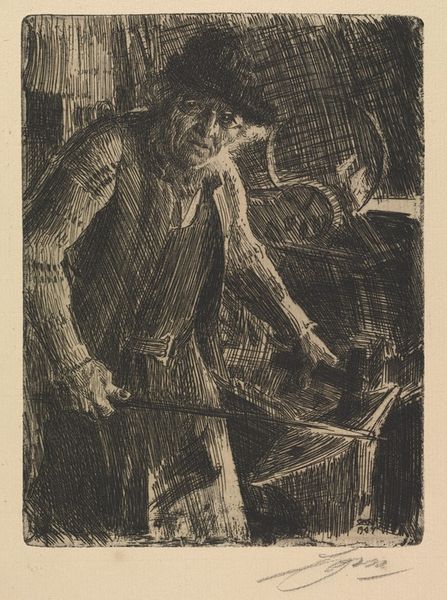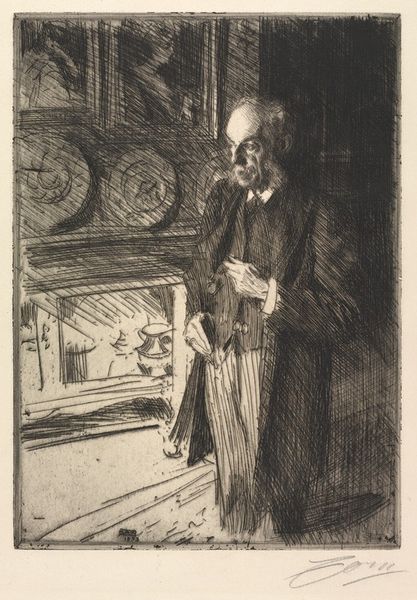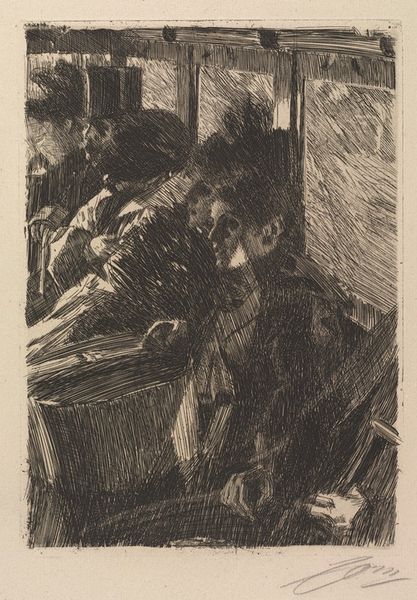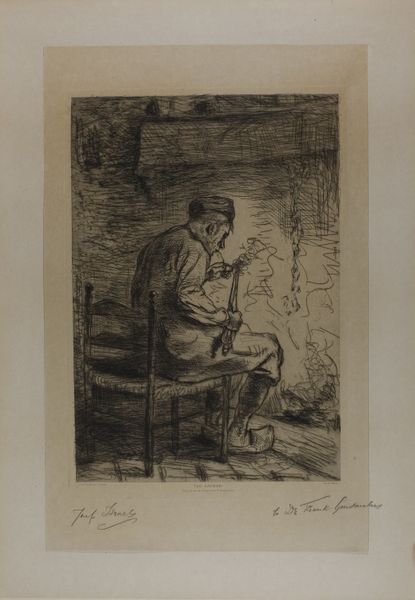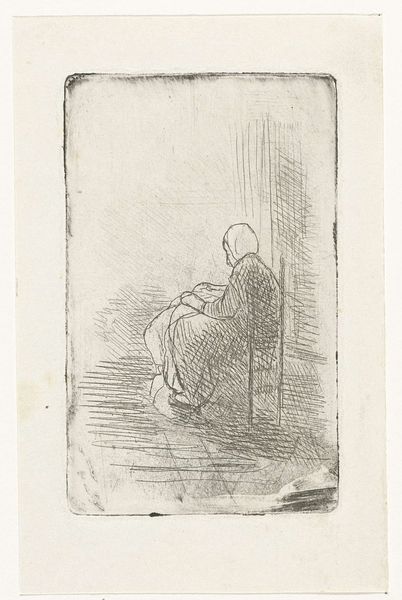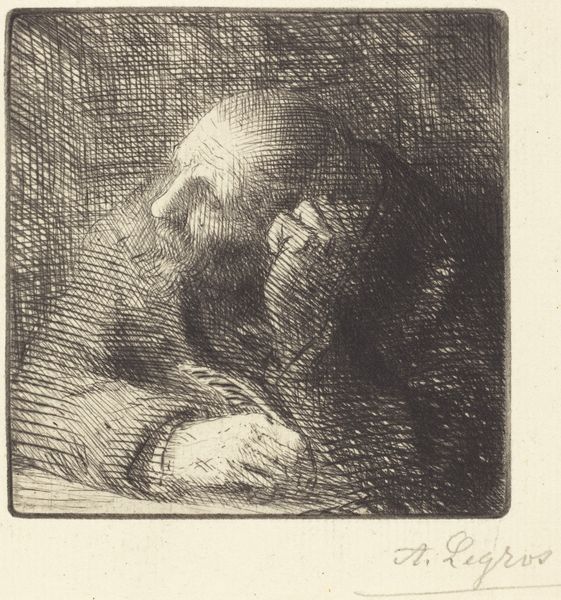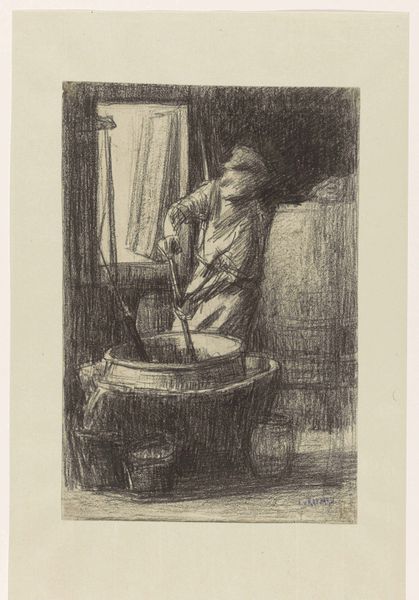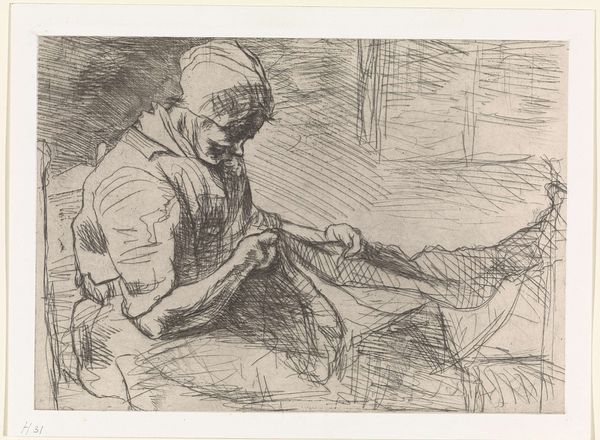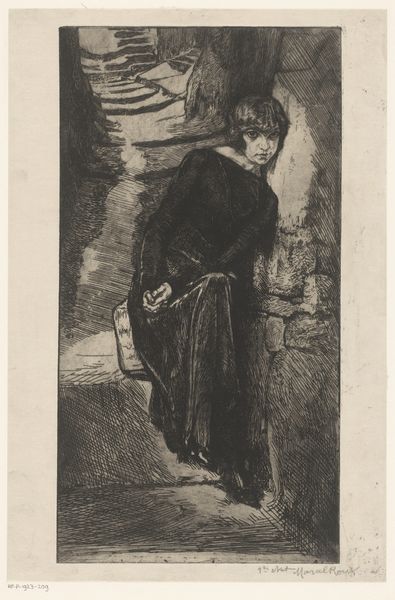
drawing, print, etching, graphite
#
portrait
#
drawing
#
narrative-art
# print
#
etching
#
pencil sketch
#
graphite
#
cityscape
#
realism
Dimensions: image: 102 x 159 mm paper: 137 x 216 mm
Copyright: National Gallery of Art: CC0 1.0
Editor: So, this etching is called "I Have a Friend at Manhattan Bank" by Irwin D. Hoffman, created in 1931. It's a somber scene; a seated figure with a hat in their hands, the word "BANK" faintly visible behind them. The lines seem scratchy and convey a sense of poverty. What do you see in this piece? Curator: The use of etching, a process involving acid to carve into a metal plate, is significant. Think about the labor involved in this image production. The deliberate, painstaking mark-making to depict this scene speaks volumes about Hoffman’s intent. Consider the materials themselves – the metal plate, the acid, the paper – and how their interaction dictates the final image. Does it resonate with the social context of its time? Editor: Definitely! The Great Depression. It seems to highlight the stark contrast between the bank’s promise and the individual's reality. The etching medium itself feels appropriate for illustrating such harsh conditions. But how does Hoffman's choice to depict this using printmaking matter? Curator: Precisely. Printmaking allows for reproduction and wider dissemination. It transforms the individual’s suffering into something reproducible, accessible to a broader audience. Was Hoffman then merely portraying poverty, or actively participating in the discourse, potentially critiquing the structures of power? It brings into question, is it fine art or social commentary that seeks to democratize visibility? Editor: That's fascinating. So, it's not just about the image, but about how that image was created and shared. It connects the material production to the economic and social realities of the time. Curator: Exactly! We must analyze its impact on labor, economy, and consumption. Consider who would have been viewing this, and what Hoffman aimed to elicit through its making. Editor: This has really changed how I look at etchings. Thinking about the material choices and production process adds a whole new layer. Curator: Indeed! Recognizing these elements within any work makes one think differently of art in relation to the cultural context and physical means of its creation.
Comments
No comments
Be the first to comment and join the conversation on the ultimate creative platform.
